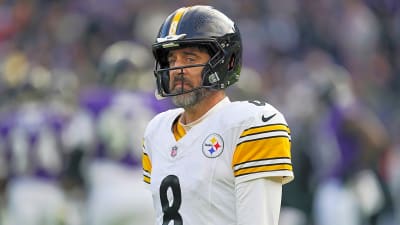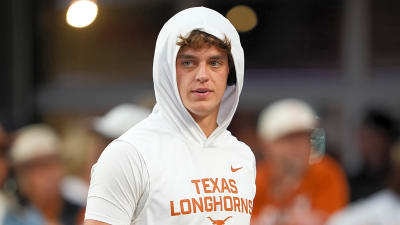
The Bruins added yet another goaltender to its roster, but it’s not Jeremy Sayman.
Boston Bruins General Manager Don Sweeney announced that the team has claimed goaltender Jiri Patera off waivers from Vancouver.
Patera, 25, appeared in 25 games with the Henderson Silver Knights (AHL) during the 2023-24 season.
The #NHLBruins have claimed goaltender Jiri Patera off waivers: https://t.co/vrdKmvfa3C
— Boston Bruins (@NHLBruins) October 2, 2024
The 6-foot-3, 212-pound netminder posted a 11-10-4 record, with a 2.99 goals against average and a .903 save percentage. He has played in 85 career AHL games, sporting an overall record of 37-40-6 with a 2.92 goals against average and a .907 save percentage.
Patera has also appeared in eight career NHL games with the Vegas Golden Knights. The Prague, Czechia native was originally selected by Vegas in the sixth round (161st overall) of the 2017 NHL Entry Draft.
He is the fourth goaltender added to the current roster, joining Joonas Korpisalo, Brandon Bussi and Michael DiPietro. Restricted free agent Jeremy Swayman still remains unsigned in a contract dispute.
Check out: Bruins goalie Brandon Bussi Builds Confidence as Opener Approaches
With the addition of Patera, the Bruins roster is now at 33. They include 18 forwards, 11 defensemen and four goaltenders.
Forwards (18): John Beecher, Justin Brazeau, Patrick Brown, Charlie Coyle, Trent Frederic, Morgan Geekie, Tyler Johnson, Max Jones, Mark Kastelic, Cole Koepke, Vinni Lettieri, Elias Lindholm, Brad Marchand, David Pastrnak, Matt Poitras, Riley Tufte, Jeffrey Viel and Pavel Zacha.
Defensemen (11): Brandon Carlo, Hampus Lindholm, Mason Lohrei, Charlie McAvoy, Ian Mitchell, Jordan Oesterle, Andrew Peeke, Alec Regula, Billy Sweezey, Parker Wotherspoon and Nikita Zadorov.
Goaltenders (3): Bussi, DiPietro, Korpisalo and Patera.
The Bruins open the regular season on Tuesday, when they travel to face the Florida Panthers, Oct. 8. They’ll play host to the Montreal Canadiens on Thursday, Oct. 10 at TD Garden at 7 p.m.
More must-reads:
- Minnesota Wild's blockbuster trade for Quinn Hughes comes at perfect time
- Nathan MacKinnon passes Joe Sakic for most goals in Avalanche history
- The 'Active NBA PPG leaders' quiz
Breaking News
Trending News
Customize Your Newsletter
 +
+
Get the latest news and rumors, customized to your favorite sports and teams. Emailed daily. Always free!








